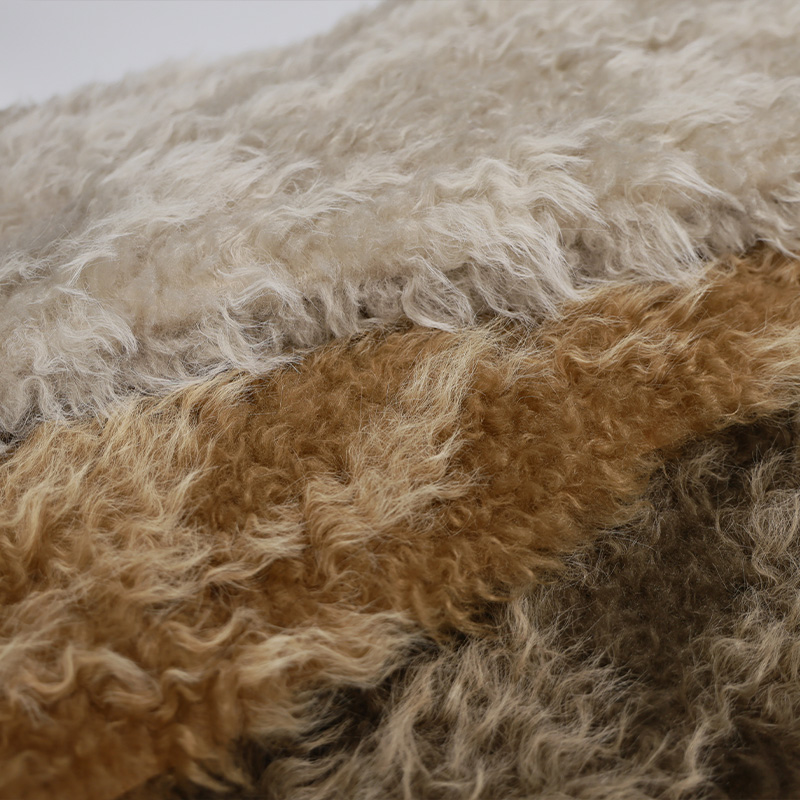











In the competitive landscape of the fashion and textile industry, imitation lamb fur has emerged as a significant player, offering a range of benefits that appeal to consumers, designers, and manufacturers. However, like any product in a dynamic market, imitation lamb fur faces a series of challenges that impact its growth and acceptance. This industry analysis explores the primary hurdles that imitation lamb fur must navigate in order to maintain its position and expand its market presence.

Perception and Consumer Mindset
One of the most significant challenges for imitation lamb fur is overcoming the perception of inferiority compared to natural fur. Many consumers associate natural fur with luxury, authenticity, and a high-end aesthetic. This mindset can be difficult to shift, especially among those who prioritize traditional values or hold a sentimental attachment to natural materials. To counter this, manufacturers and designers must continue to innovate, enhancing the quality, texture, and appearance of imitation lamb fur to make it indistinguishable from the real thing.
Competition from Alternative Materials
The marketplace for fashion and textiles is crowded with a variety of materials that offer similar benefits to imitation lamb fur. Synthetic fibers, faux leathers, and other artificial materials compete for consumer attention, each with their own unique selling points. This competition can limit the market share that imitation lamb fur can capture, making it essential for manufacturers to differentiate their products through superior quality, design, and value proposition.
Production Costs and Pricing
While imitation lamb fur is generally more cost-effective than natural fur, the production process can still involve significant expenses. High-quality materials, advanced manufacturing techniques, and rigorous quality control measures all contribute to the overall cost. Balancing these costs with consumer expectations and competitive pricing strategies is a delicate act that requires careful management. Manufacturers must continuously seek ways to optimize production processes, reduce waste, and improve efficiency to stay competitive.
Consumer Education and Awareness
Another challenge for imitation lamb fur is raising consumer awareness about its benefits and advantages. Many consumers may be unaware of the advancements in technology and quality that have made imitation fur a viable and attractive alternative to natural fur. Manufacturers and designers must invest in marketing and educational campaigns to inform consumers about the ethical, cost-effective, and durable nature of imitation lamb fur. This can help to change perceptions and drive demand for these products.
Market Saturation and Consumer Fatigue
As imitation lamb fur becomes more prevalent in the marketplace, there is a risk of market saturation and consumer fatigue. With so many options available, consumers may become overwhelmed and struggle to differentiate between various brands and products. This can lead to decreased sales and reduced market share for manufacturers. To combat this, it is crucial for companies to focus on innovation, continuously developing new designs, textures, and applications that captivate consumer interest and stand out from the competition.
Supply Chain Challenges
The global supply chain for fashion and textiles is complex and often subject to disruptions. This can impact the availability and cost of raw materials, manufacturing processes, and logistics, all of which can affect the production and distribution of imitation lamb fur. Manufacturers must develop robust supply chain management strategies to mitigate these risks, ensuring a consistent and reliable supply of high-quality materials.
Conclusion
In summary, the market for imitation lamb fur presents a range of challenges that manufacturers and designers must navigate to succeed. From overcoming consumer perceptions and competing with alternative materials to managing production costs and raising consumer awareness, these hurdles require strategic thinking, innovation, and a commitment to quality. By addressing these challenges effectively, imitation lamb fur can continue to grow and thrive in the competitive landscape of the fashion and textile industry.